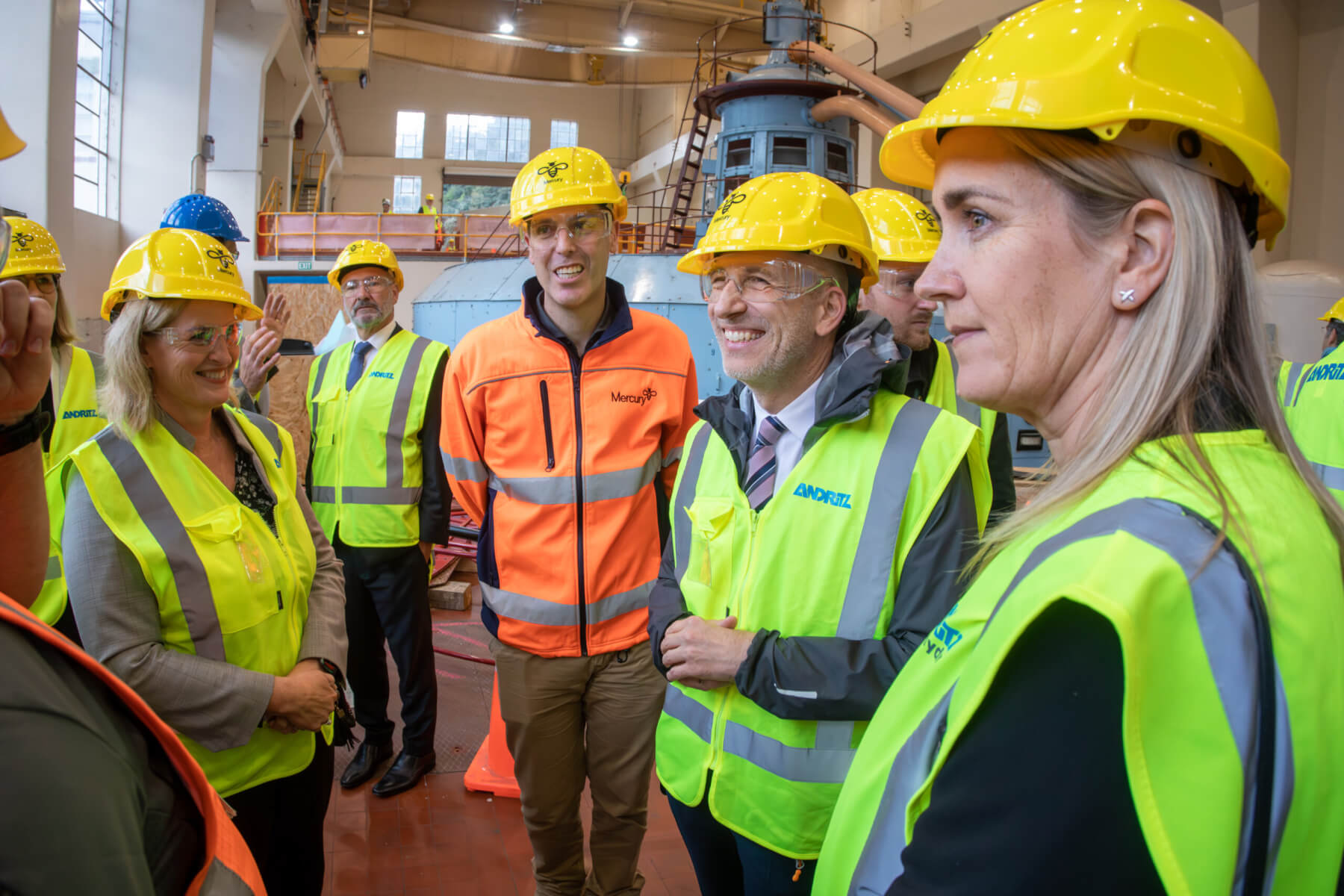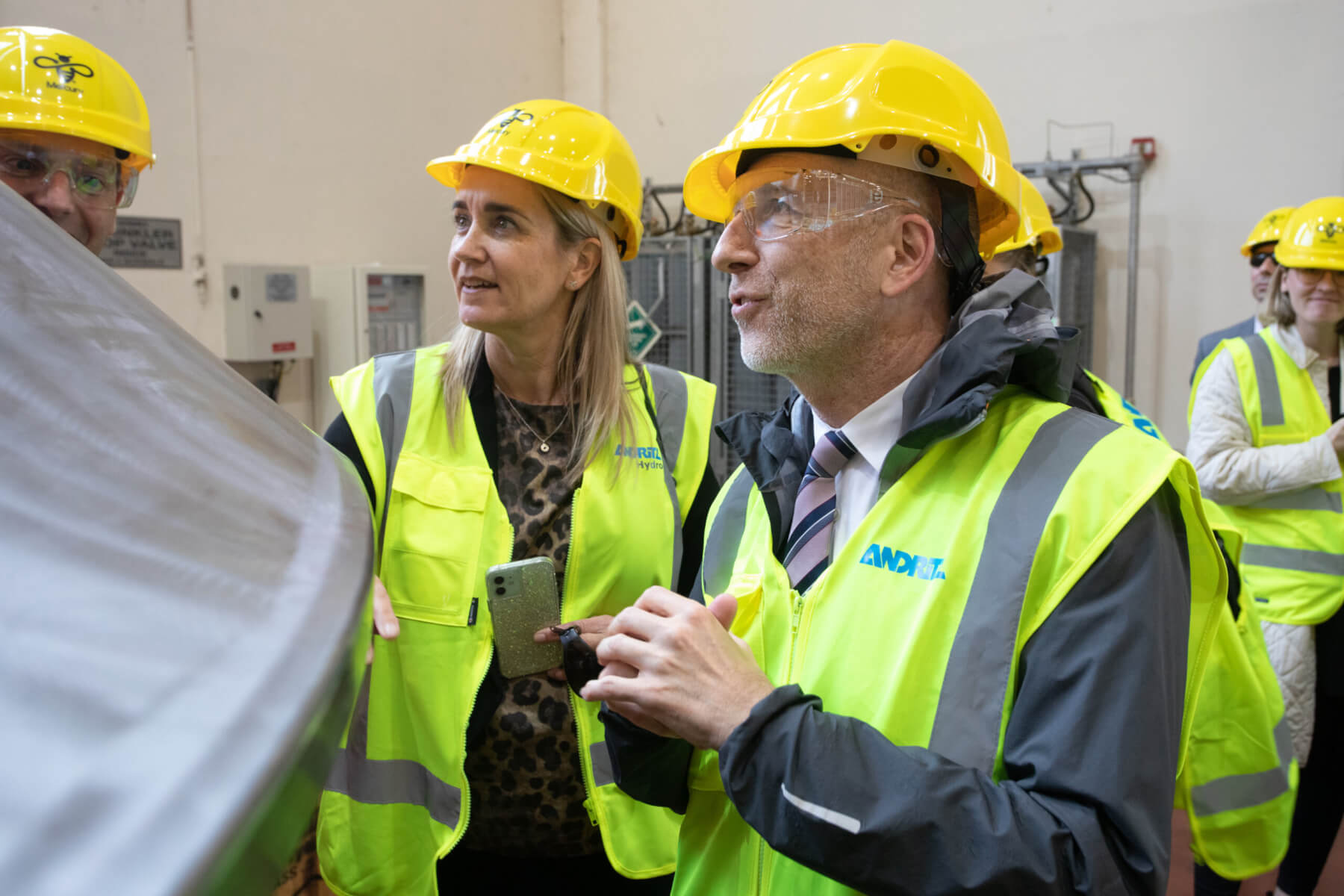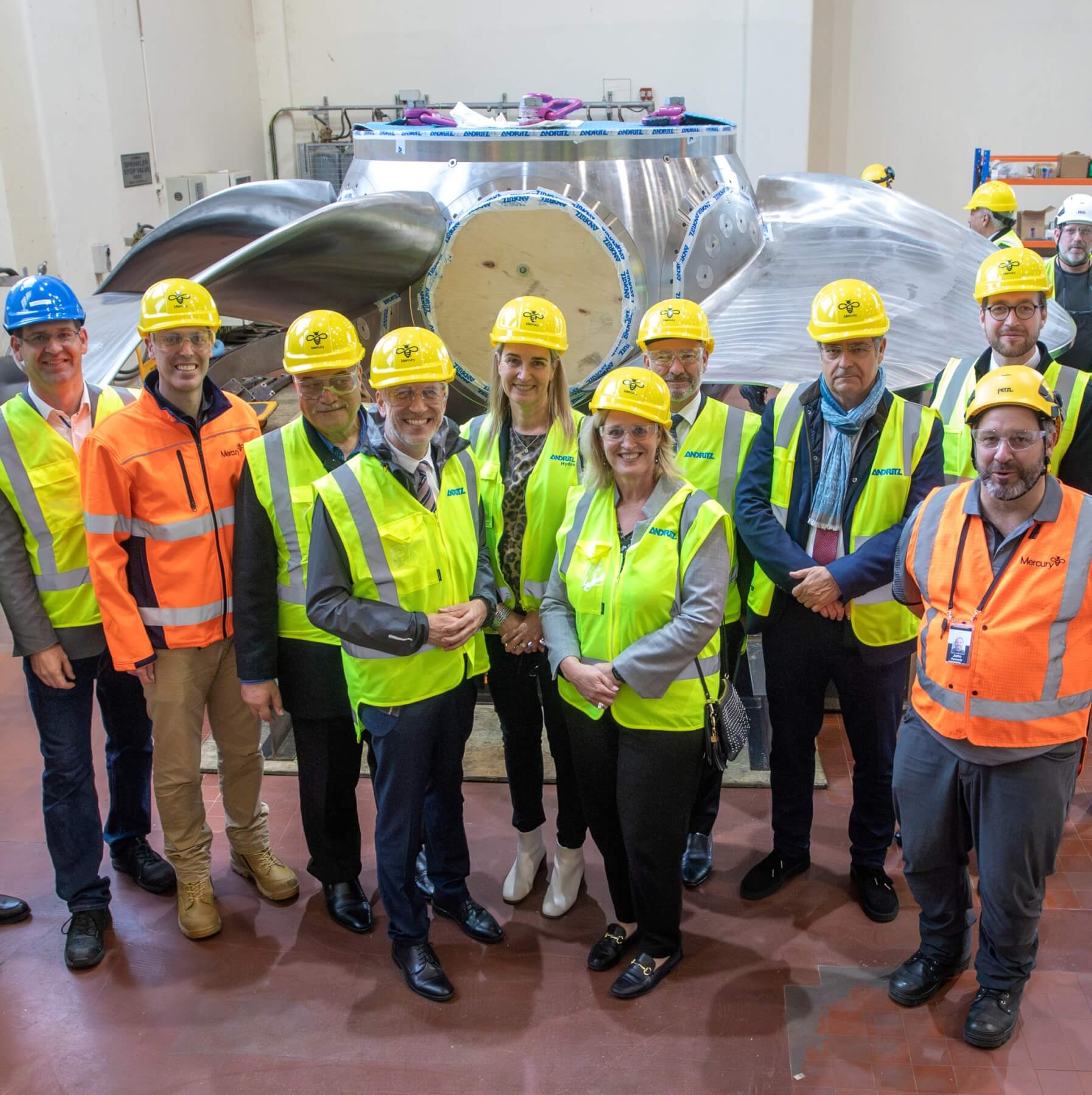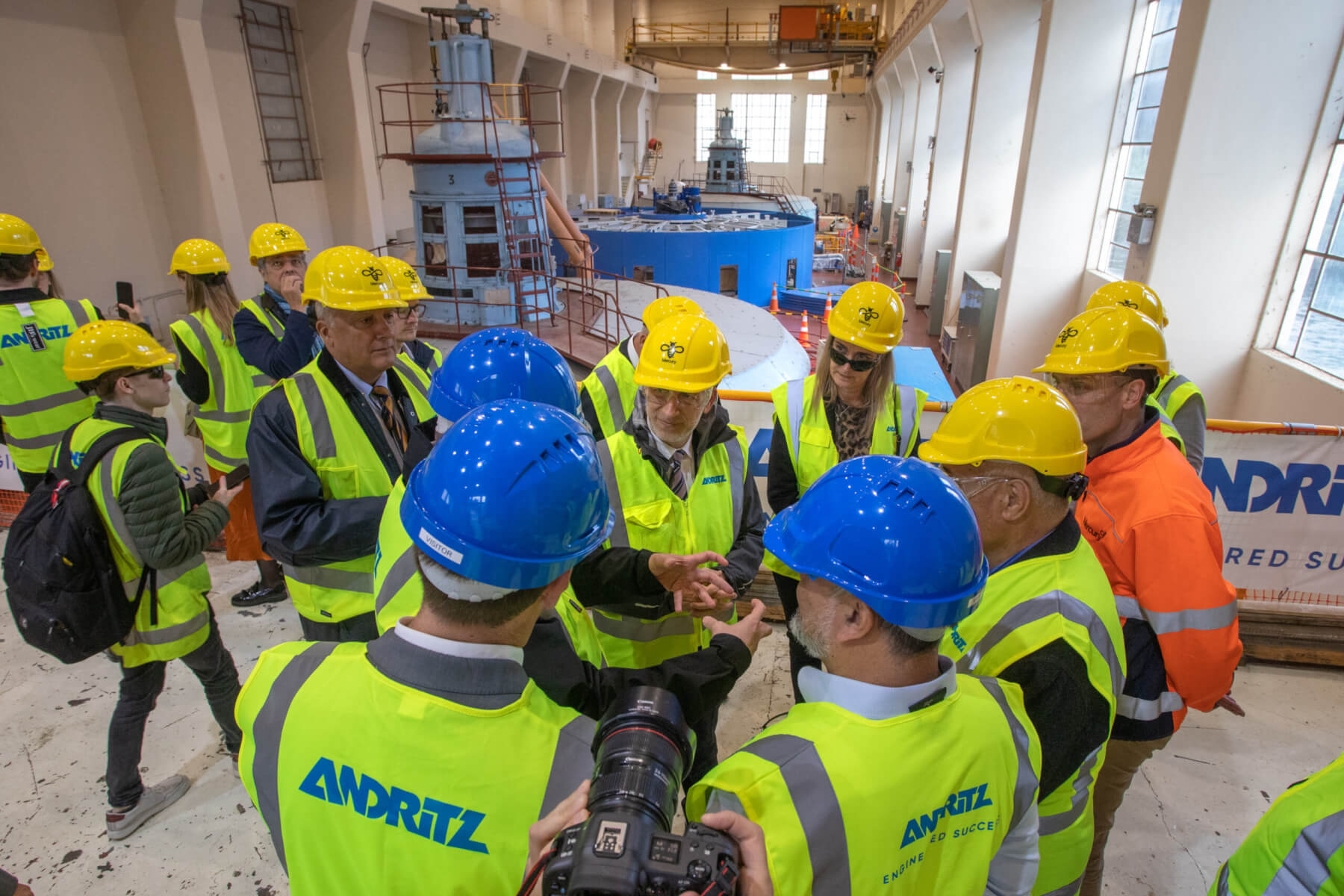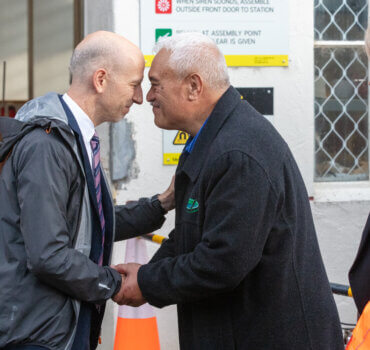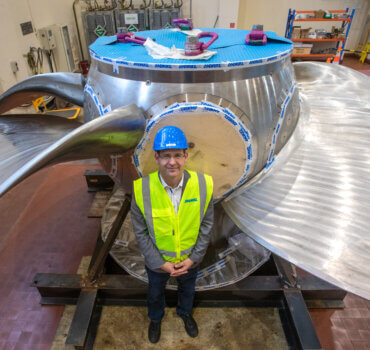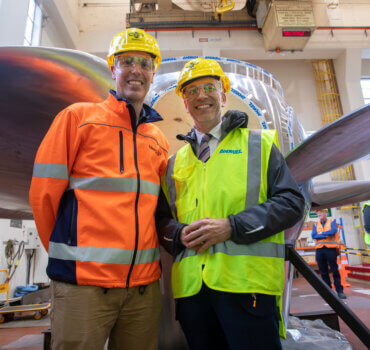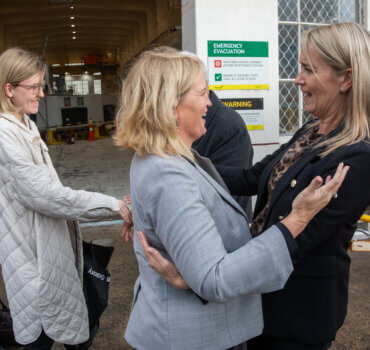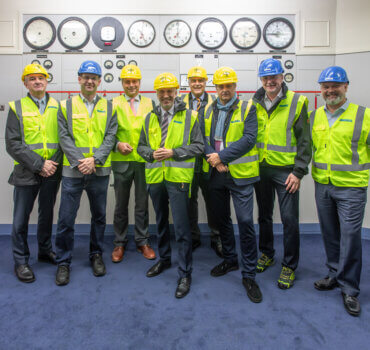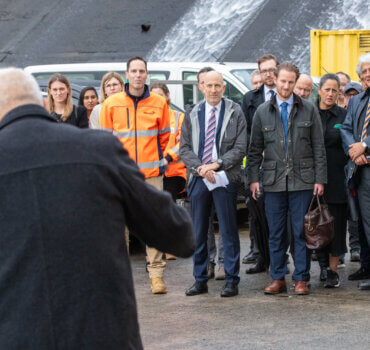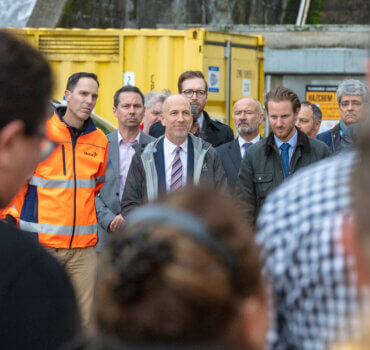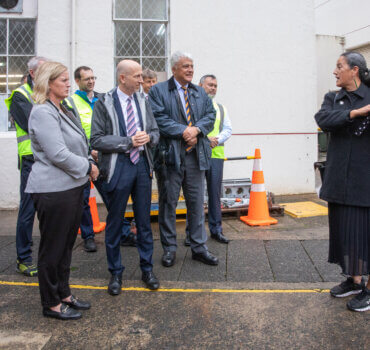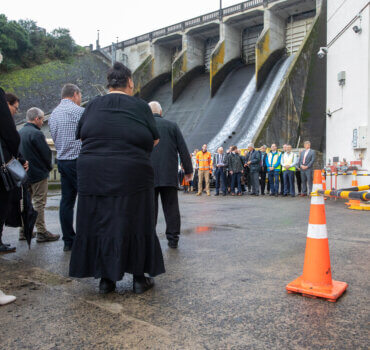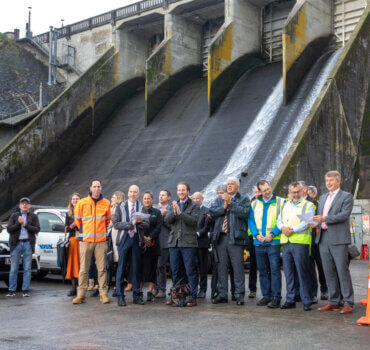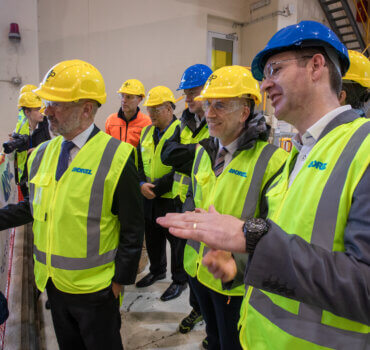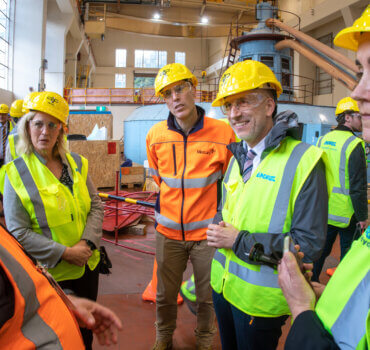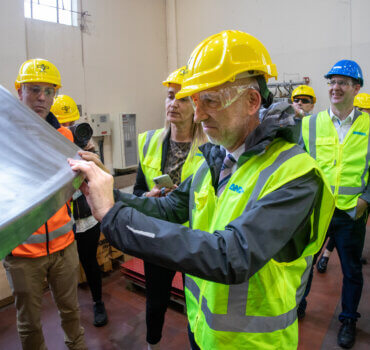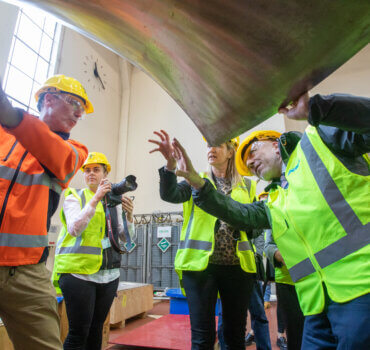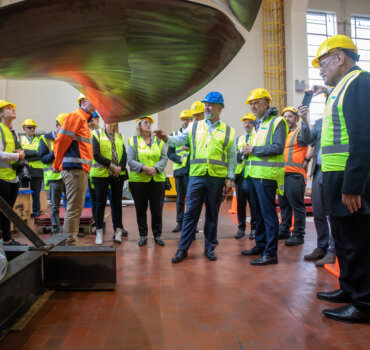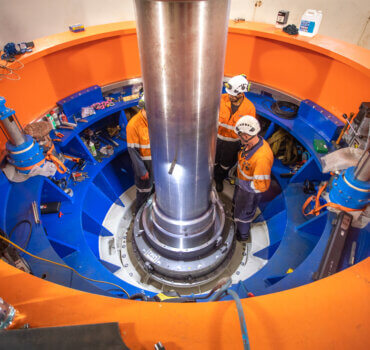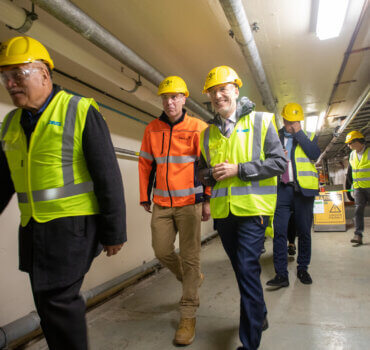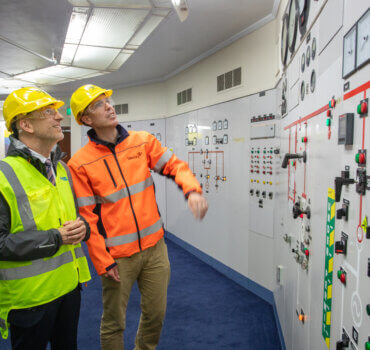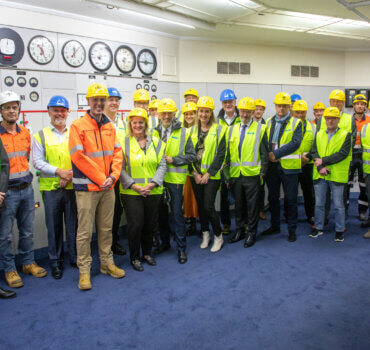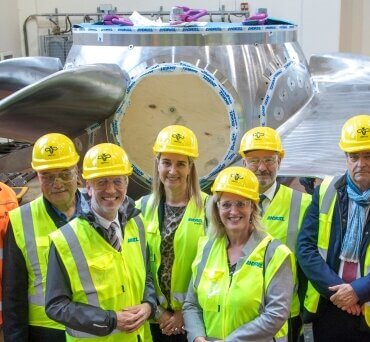
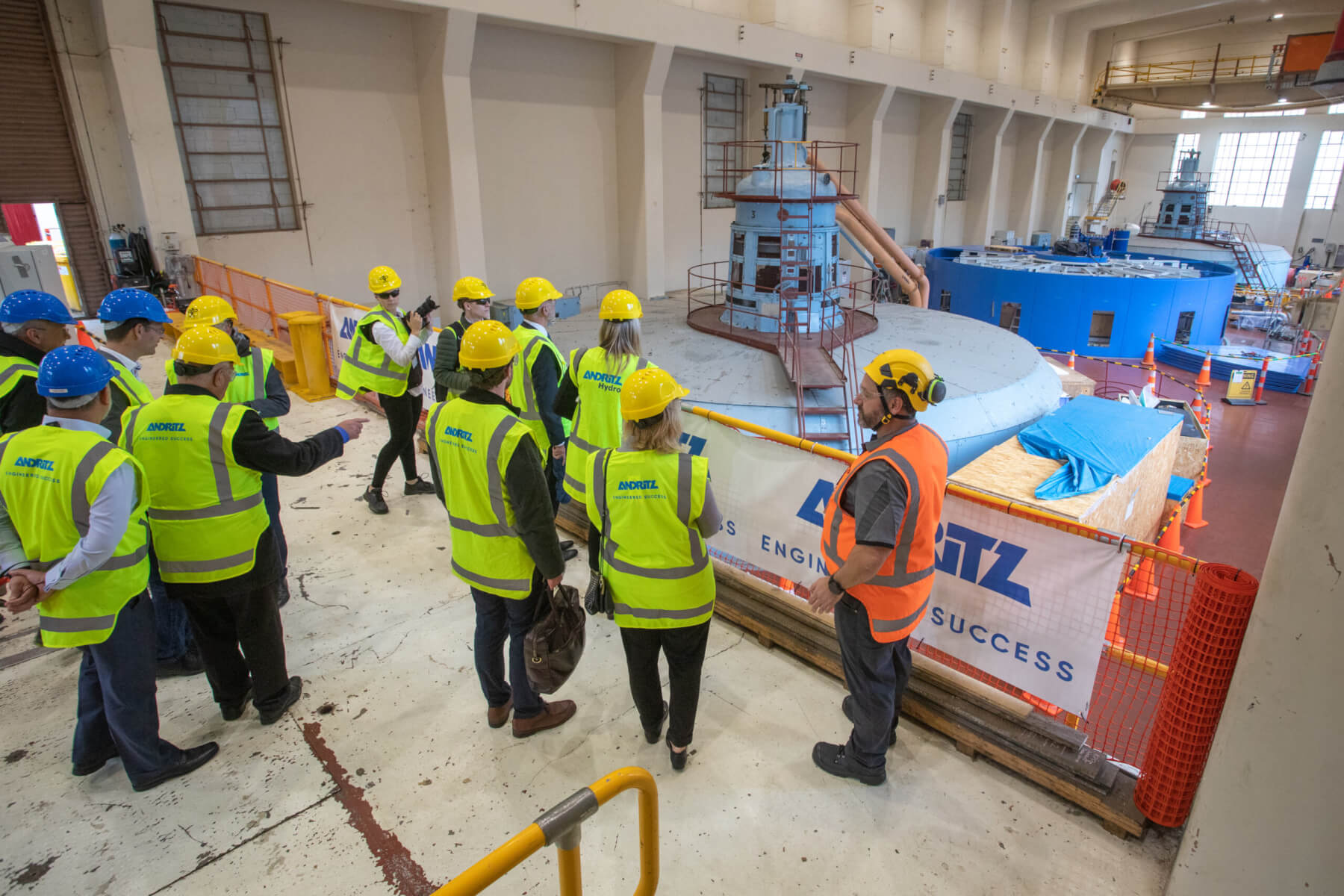
Members of the Austrian delegation and invited guests look towards the first of three replacement generating units (in middle). Photo: Supplied.
An Austrian delegation has been given a look at the first of three new turbines installed as part of the Karāpiro hydro dam’s $75 million upgrade.
Mercury Energy is using Andritz, an Austrian company, to replace three turbines – weighing a total 40 tonnes – at the dam. The first should be operating by next month. The last should be in by June 2025.
The contingent, led by the country’s Minister of Labour and Economy Martin Kocher and New Zealand ambassador Wolfgang Strohmayer, were in New Zealand signing a strategic trade partnership deal with New Zealand.
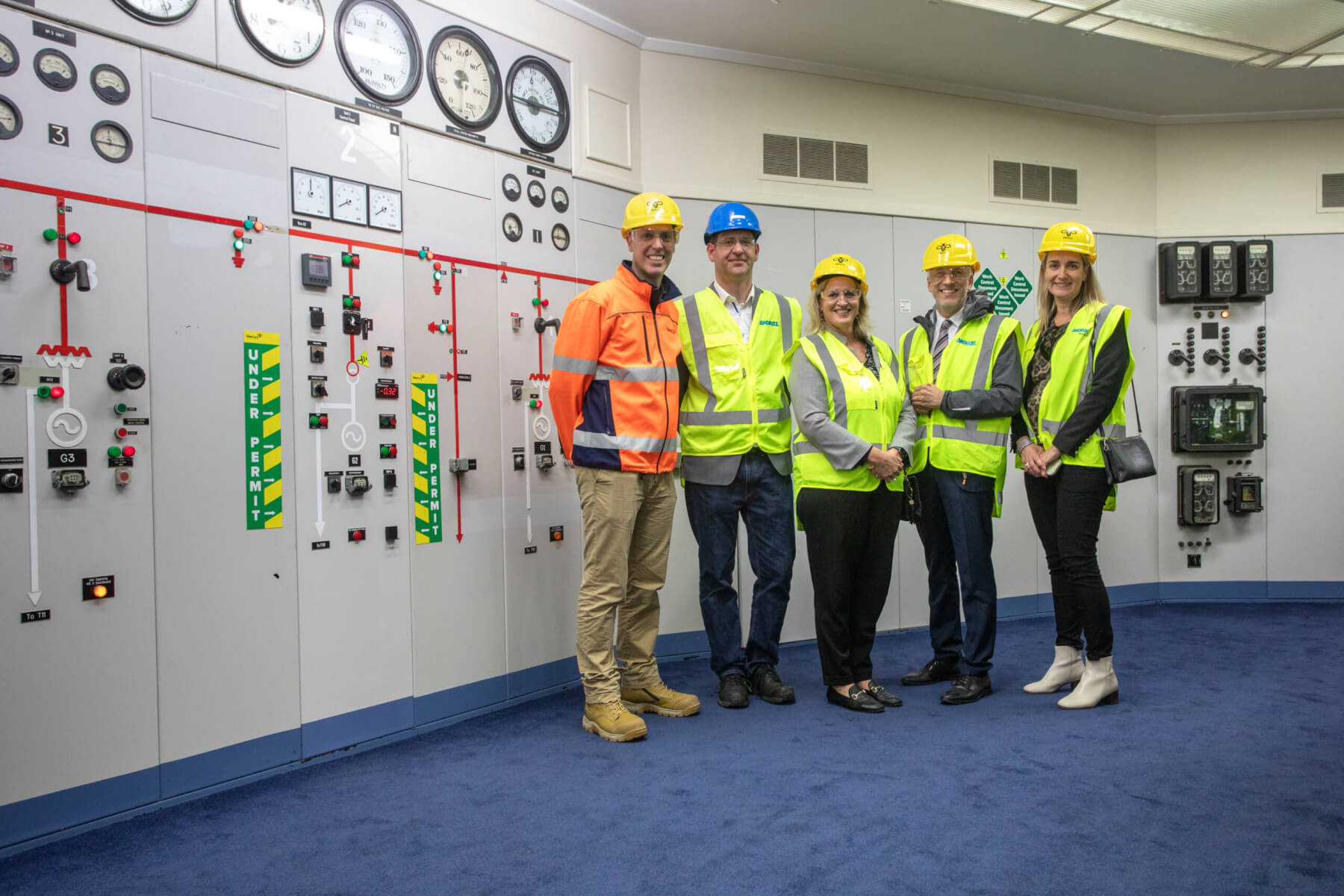
In the Karāpiro control room where Queen Elizabeth II was pictured in 1954, from left: Mercury Energy generation manager Stewart Hamilton, Andritz New Zealand general manager Tony Mulholland, Taupō MP Louise Upston, Austrian minister of labour and economy Martin Kocher and Waipā mayor Susan O’Regan. Photo: Supplied.
The trip to Karāpiro was an obvious stop over and they were able to see the completed unit undergoing commissioning testing while preconstruction has started on the second unit in the dam’s loading bay.
Visitors were told more than 400 tonnes of scrap metal have been trucked off site.
The Karāpiro Refurbishment Project is the fourth in a series of investments being made by Mercury in a multi-decade investment into power infrastructure along the Waikato River.
The overall investment programme is the first equipment upgrade of many of the river’s power stations and is an important step in modernising the assets that already exist to support the future peak power capacity and usage demands needed for a zero carbon future.
Andritz has supplied a significant portion of the generation equipment running in New Zealand since 1912. The company installed the three turbines at Karāpiro in the late 1940s.
Mana Whenua Ngati Koroki Kahukura and Ngati Hauā – led by Karaitiana Tamatea – welcomed the delegation to the site. The Austrians, in response, sang a folk song.
Among those present were Taupō MP Louise Upston, Waipā mayor Susan O’Regan, Waikato regional councillor Stu Kneebone, Mighty River Domain site manager Andrew Reymer, Mercury representatives and a representative from New Zealand’s Ministry of Business, Innovation and Employment.
Meanwhile the dam bridge part of Ariki Street reopened this week after several months to allow programme works on the dam road. Several more partial closures will continue over the next two years.
- Mercury Energy generation manager Stewart Hamilton, Austrian minister of labour and economy Martin Kocher and Waipā mayor Susan O’Regan. Photo: Supplied.
- Waipā mayor Susan O’Regan and Austrian minister of labour and economy Martin Kocher look over the new unit. Photo: Supplied.
- New unit: Andritz New Zealand general manager Tony Mulholland, Mercury Energy generation manager Stewart Hamilton, Ngāti Korokī Kahukura’s Karaitiana Tamatea, Austrian minister of labour and economy Martin Kocher, Waipā mayor Susan O’Regan, Taupō MP Louise Upston and at right (in orange) Mercury Energy Hydro Rehab Programme manager John Kennedy with other members of the delegation. Photo: Supplied.
- Austrian minister of labour and economy Martin Kocher, centre, alongside Waipā mayor Susan O’Regan asks questions about the project. Photo: Supplied.
- Ngāti Korokī Kahukura’s Karaitiana Tamatea, Austrian minister of labour and economy Martin Kocher,
- Andritz New Zealand general manager Tony Mulholland
- Mercury Energy generation manager Stewart Hamilton, Austrian minister of labour and economy Martin Kocher
- Taupo MP Louise Upston welcomes Waipa mayor Susan O’Regan.




